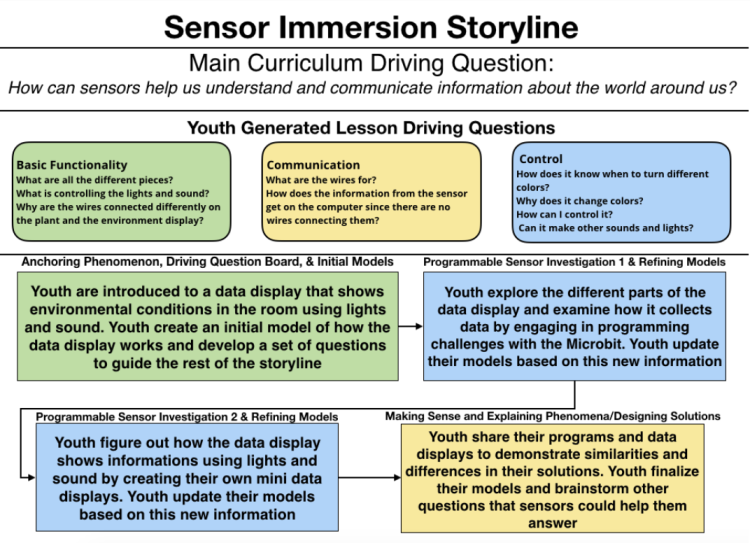Sensor Immersion
Driving Question
How can sensors help us understand and communicate information about the world around us?
Synopsis
This unit introduces students to programmable sensor technologies that can be used as tools to investigate, monitor, and communicate classroom environmental data (e.g. temperature, humidity, sound volume, carbon dioxide level, volatile organic compound level, and the soil moisture of a classroom plant). Students generate questions about a classroom environmental data display built using programmable sensors. These questions guide students through a series of lessons to investigate how sensors work and how data moves within the system to collect and communicate information.
We recommend starting with this unit first before starting one of the other sensor integrated units.
What Students Figure Out
By the end of the unit, students develop ideas about using Computational Thinking and sensors in science including:
- How a classroom environment sensing system and data display works
- What different types of sensors do and measure
- What kinds of questions they can answer using the sensor system
- How to program sensors to perform data collection using both the micro:bit and google sheets
- How to program sensors to act as indicators and trigger lights and sound
- How sensors can help with their scientific investigations and help them answer their questions
Targeted NGSS Performance Expectation
- MS-ESS3-3. Apply scientific principles to design a method for monitoring and minimizing a human impact on the environment.


